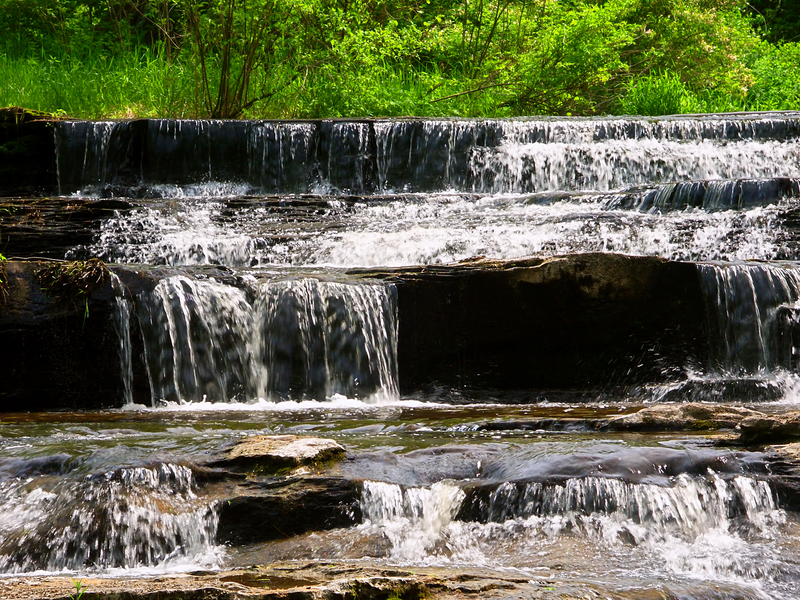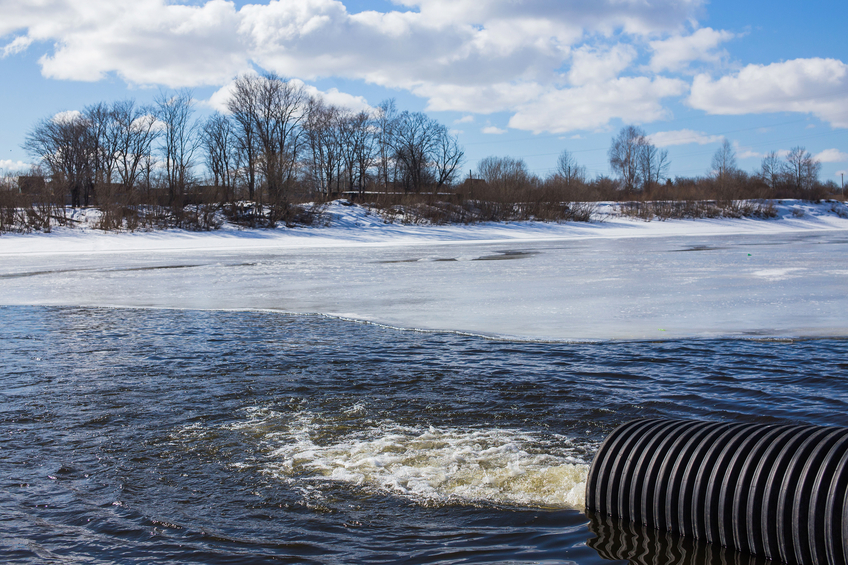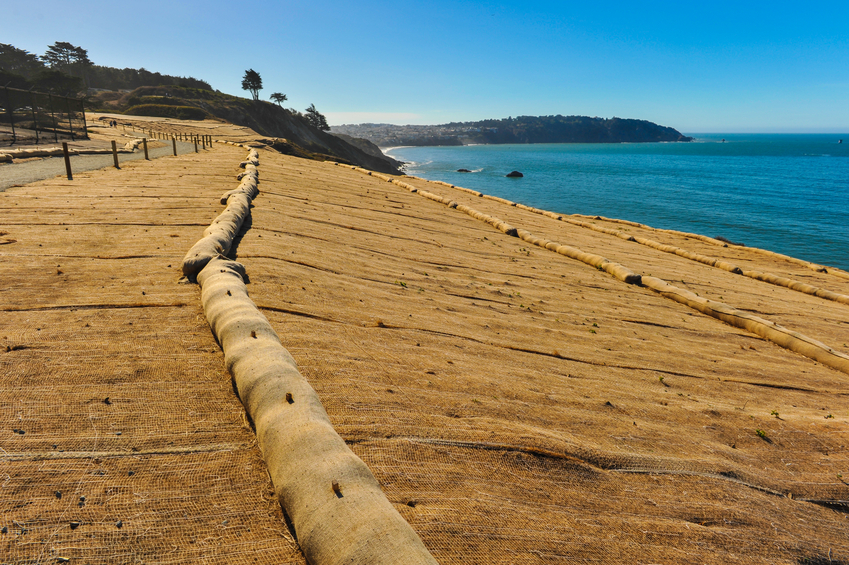Hydrology 24 PDH Discount Package
Courses in this Package
Hydraulic Design of Storm Sewers Using Excel (C04-014)
Hydrology (Part 1) - Precipitation (C04-018)
Pond Planning, Design and Construction (C05-014)
Stream Restoration (C07-005)
Valve Fundamentals (M04-024)

This online enineering PDH course explains how to derive the pipe diameter and slope for each length of storm sewer and the depth to the pipe bottom at each manhole.The overall procedure and each step will be presented and discussed. Example calculations for a single length of storm sewer between two manholes will be performed and an example of calculations between successive manholes will be done using Excel.
Storm sewers are widely used to carry away runoff from storms, primarily in urban areas. The hydraulic design begins after the locations of the manholes for the system have been determined. Between each pair of manholes the storm sewer will have a constant slope and diameter. The hydraulic design process results in determination of an appropriate diameter and slope for each length of storm sewer and determines the depth of the bottom of the pipe at each manhole.
This 4 PDH online course is intended for hydrologists, civil engineers, hydraulic engineers, highway engineers and environmental engineers. After completing this course, you will be able to carry out hydraulic design of storm sewers to determine diameter, slope and depth of invert at each manhole for the length of storm sewer between two successive manholes. After completing this course, you will also be able to set up an Excel program to carry out hydraulic design for successive lengths of storm sewer.
This PE continuing education course is intended to provide you with the following specific knowledge and skills:
- Be able to determine the value for runoff coefficient for a drainage area with known land use, SCS soil group, and approximate surface slope.
- Be able to find the rainfall intensity for specified storm duration and return period at a specified location if given an I-D-F table or graph for that location.
- Be able to estimate the overland flow travel time for a drainage area using the Manning Kinetic Equation.
- Be able to estimate channel flow travel time using Manning's Open Channel Flow Equation.
- Be able to estimate peak runoff rate from a drainage area using the Rational Method.
- Be able to use Method I and Method II as outlined in this course to calculate design diameter and slope for a length of storm sewer between two successive manholes.
- Be able to determine the velocity and flow rate in a circular pipe flowing partially full if enough information is available to calculate the full pipe velocity and flow rate.
- Be able to put together the above skills to carry out the overall hydraulic design of a length of storm sewer between two successive manholes.
- Be able to use Excel to make storm sewer hydraulic design calculations for lengths of storm sewer between successive manholes.
In this professional engineering CEU course, you need to review the course document titled, "Hydraulic Design of Storm Sewers Using Excel". In addition, you need to review the Excel spreadsheet titled, "Storm Sewer Hydraulic Design_US units".
Storm Sewer Hydraulic Design_US units (77 KB)
Upon successful completion of the quiz, print your Certificate of Completion instantly. (Note: if you are paying by check or money order, you will be able to print it after we receive your payment.) For your convenience, we will also email it to you. Please note that you can log in to your account at any time to access and print your Certificate of Completion.

This online engineering PDH course reviews the hydrological cycle, watershed characteristics, precipitation, and the rainfall or runoff process.
An understanding of hydrology is important for many civil engineering, environmental engineering, and geotechnical related projects. A good starting point is review of the hydrological cycle, watershed characteristics, precipitation, and the rainfall/runoff process, which are included in this course as the first part of the "Hydrology Review Series". These topics provide a start on the review of hydrology and preparation for studying more advanced areas of hydrology.
This 4 PDH online course is intended for hydrologists, civil engineers, hydraulic engineers, highway engineers, geotechnical engineers and environmental engineers.
This PE continuing education course is intended to provide you with the following specific knowledge and skills:
- Be familiar with the processes by which water is transported and converted from one form to another in the hydrological cycle
- Be familiar with watershed characteristics and the way that they affect runoff from the watershed in response to precipitation
- Be able to determine probability of occurrence in a single year for storm of given return period and vice versa.
- Be able to obtain values for the Manning roughness coefficient for overland and sheet flow for various specified ground covers.
- Be able to obtain values for the intercept coefficient for use in the velocity vs slope equation for specified type of flow and ground cover.
- Be able to estimate velocity for overland flow using the velocity slope equation
- Be able to estimate velocity for pipe and channel flow using the Manning equation
- Be able to calculate time of concentration by the velocity method
In this professional engineering CEU course, you need to review Chapters 1 and 2 of the "Highway Design Series No. 2", Second Edition published by U.S DOT in October 2002.
Upon successful completion of the quiz, print your Certificate of Completion instantly. (Note: if you are paying by check or money order, you will be able to print it after we receive your payment.) For your convenience, we will also email it to you. Please note that you can log in to your account at any time to access and print your Certificate of Completion.

This online engineering PDH course describes basic design principles of embankment and excavation ponds as well as construction requirements. Other topics include: water needs, preliminary soil investigations, watershed & stormwater runoff estimation, basin sealing, spillways and inlets, and operation & maintenance.
This 5 PDH online course is intended for hydrologists, civil engineers, agricultural engineers, construction engineers, municipal engineers, geotechnical engineers and environmental engineers. An attendee of this course will gain knowledge about planning, design, and construction of embankment and excavated ponds.
This PE continuing education course is intended to provide you with the following specific knowledge and skills:
- Be familiar with the general features of embankment and excavated ponds and the differences between them
- Be familiar with the items to be covered in a preliminary investigation
- Be able estimate storm water runoff quantity and rate using the runoff curve number method
- Be able to estimate the time of concentration for a watershed for a given flow length, average watershed slope, and runoff curve number
- Be familiar with the general features of a hooded or canopy inlet spillway and a drop inlet spillway, as well as the advantages and disadvantages of each
- Be able to make spillway design calculations using tables and figures given in the course file
- Be able to estimate embankment end area for known embankment height, side slopes, and top width
- Be able to estimate earthfill requirements for an embankment for known end areas and embankment length
- Be familiar with alternative pond sealing methods and comparisons among them
Upon successful completion of the quiz, print your Certificate of Completion instantly. (Note: if you are paying by check or money order, you will be able to print it after we receive your payment.) For your convenience, we will also email it to you. Please note that you can log in to your account at any time to access and print your Certificate of Completion.

This online engineering PDH course covers procedures for evaluating the stability of a stream channel reach and planning and design for restoration of an unstable stream channel reach to bring it back into a stable condition.
A natural stream channel remains stable over a wide range of flows, typically accumulating sediment during low flow periods and carrying sediment downstream during high flow periods. Changes to the channel, vegetation, floodplain, flow or sediment supply may affect the equilibrium and cause the stream channel to become unstable.
This 7 PDH online course is intended primarily for civil engineers, hydraulic engineers, hydrologists, and geologists. Someone completing this course will gain knowledge about stream channel evaluation and stream channel restoration procedures.
This PE continuing education course is intended to provide you with the following specific knowledge and skills:
- Familiarization with the fluvial processes
- Learning stream assessment and survey procedures
- Understanding the Rosgen stream classification systems
- Learning how to conduct bankfull verification and gage station analyses
- Understanding the priority options for restoring incised streams
- Knowing the reference reach surveys
- Learning design procedures
- Understanding structures for stream restoration
- Understanding riparian-buffer re-establishment
- Developing erosion and sediment control plans
- Conducting flood studies
- Performing restoration evaluation and monitoring
In this professional engineering CEU course, you need to review the course document, "Stream Restoration - A Natural Channel Design Handbook," prepared by the North Carolina Stream Restoration Institute and North Carolina Sea Grant.
Upon successful completion of the quiz, print your Certificate of Completion instantly. (Note: if you are paying by check or money order, you will be able to print it after we receive your payment.) For your convenience, we will also email it to you. Please note that you can log in to your account at any time to access and print your Certificate of Completion.

This online engineering PDH course provides information about the basic components of a valve and their function. It also presents information about each of the types of valves in common use, the globe, gate, plug, ball, needle, butterfly, diaphragm, pinch, check, safety/relief, and reducing valve. It also provides general description of each and relative advantages and disadvantages in comparison with other types of valves.
Valves are widely used in fluid piping systems to shut off or throttle flow, as well as to prevent backflow, reduce pressure or relieve pressure.
This 4 PDH online course is intended for civil, mechanical, chemical, environmental and industrial engineers, as well as anyone who works with fluids flowing in pipes. An attendee of this course will gain knowledge about the basic types of valves and their use.
This PE continuing education course is intended to provide you with the following specific knowledge and skills:
- Be familiar with the basic components of a valve and their function, including the body, bonnet, stem, actuator, packing, seat, and disk
- Be familiar with the basic functions of a valve
- Be familiar with the gate, globe, plug, ball, needle, butterfly, diaphragm and pinch valves, including their use for shutoff and throttling, and the construction, operation, and relative advantages and disadvantages of each
- Be familiar with the general construction and operation of the different types of check valves, including swing, tilting disk, lift, piston, butterfly, and stop check valves
- Be familiar with the general construction and operation of reducing valves
- Be familiar with the general construction and operation of safety and relief valves, and the differences between them
- Be familiar with the construction and principle of operation of manual, electric motor, pneumatic, hydraulic, and solenoid valve actuators
In this professional engineering CEU course, you need to review the material contained in the Department of Energy Fundamentals Handbook, Publication DOE-HDBK-1018/2-93, "Mechanical Science Module 4 - Valves".
Upon successful completion of the quiz, print your Certificate of Completion instantly. (Note: if you are paying by check or money order, you will be able to print it after we receive your payment.) For your convenience, we will also email it to you. Please note that you can log in to your account at any time to access and print your Certificate of Completion.